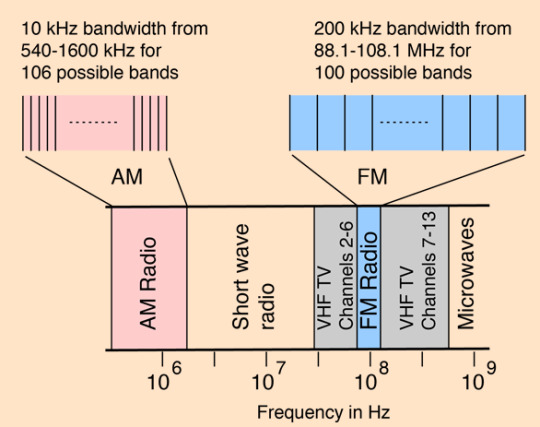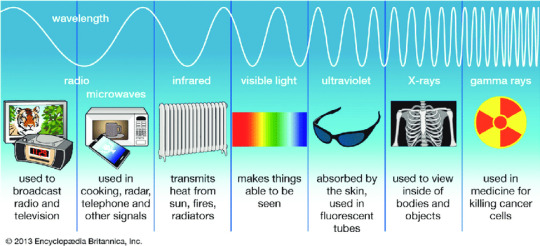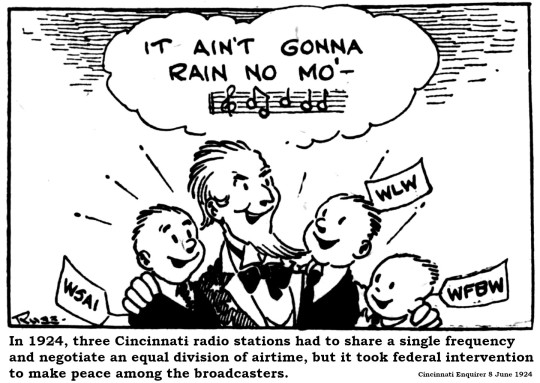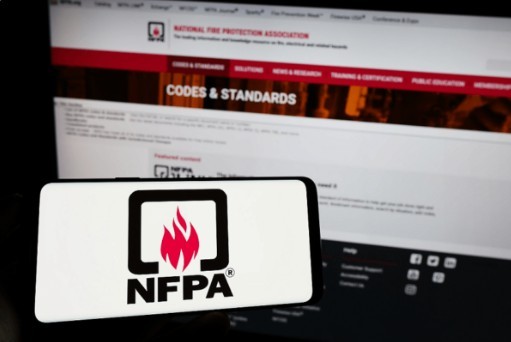#allocated electronic parts
Explore tagged Tumblr posts
Text
officer's ball
If there was one thing that eventually turned you against the aristocracy, it was the yearly humiliation of you, your handler, and your entire ground crew being forced into beribboned beyond-antique pre-starflight fashion every year for the Officer's Ball. They insisted. They said the nobles needed the human element. They said it'd justify your funding.
"Ammo doesn't grow on trees," the woman who directed your every combat action said. "And if it did, they'd be found growing only in First Landing family gardens. I hate this. I hate these people. Every fucking year, just to keep the program running. Don't they get bored?" and then she burst into tears and you had to do her makeup again, from the beginning.
You didn't mind it so much for yourself. The entitled fat old perverts of every gender trying to grab your ass and catching a handful of hoopskirt were entertaining. So was being forced to sample a continuous mix of canapés, sherry, cocaine, chocolate, PL-2141, and further canapés. If you really worked at it, you could approximate a slight buzz, the faintest echo of what interface drugs did on an average mission day.
But your poor mechanic wasn't used to being groped by the nobility or plied with anything stronger than hangar coffee. By two hours in, she was looking green around the edges and ready to puke in the nearest potted palm. Your avionics specialist, parted from her usual headphones and overlay glasses, was rigid with sensory overload and unable to dissociate because some third son of some electronics bureau minister had her cornered about a harebrained idea and wouldn't let go.
Your handler was worst of all: thoroughly miserable in her tightly corseted dress and constitutionally unsuited to any kind of discomfort inflicted upon her own person, rather than yours. She jumped at the slightest touch, gritted her teeth even more noticeably with every introduction. Your signed or whispered attempts to quietly reassure her that the "mission" was on track and would be over soon caused her to twitch and on one occasion even yelp, startling the admiral responsible for your fuel allocation. You smoothed it over as best you could, insinuating something about "combat nerves" — the old fool might have actually thought she was a pilot! But you didn't feel the need to explain, not that night.
The next day, as you hunted down a rebel tactical element in the hills above Seyan's Folly, she was still hung over. Not hung over enough to not notice when the pinned-down rebel lieutenant started in on an honest-to-God "you're not so different, you and I" speech, but hung over enough that she told your comms operator to cut the audio feed to Command, not your cockpit speakers.
"We're listening," you boomed over external PA speakers, forwarding her orders. "Wait? We're listening? Apparently we're listening."
"Shit. I mean. We're not that different, really, but obviously there's, uh, you're part of a system, and there's, redemption is on the table, I guess, maybe you'd like to, uh… honestly, I was just buying time."
"Don't get cocky, I've had your reinforcements bracketed by smart mortars for the last two minutes," you said. "You never had any time to buy. But… tell me about your side's command structure. Does it have a yearly ball?"
"Are you fucking joking?"
Things got complicated after that, with the improvised extraction, but what the hell, your team already worked well together.
You've had to work for every round and every joule and every mole of active nanomachinery since (much of it wrested from lesser units sent from your homeworld to drag you back) and you share a tiny, noisy cabin with your handler above the large bay of a rebel assault transport.
Maybe you're on the right side. Maybe there isn't one. But they're still letting you pilot, and your handler has happily returned to a tank top, fatigue pants, and what's left of her battered leather jacket, restoring her confident growl over the tactical link. The liaison officer they've got watching you has assured her that there's not a single brocade ball gown in the entire fleet. □
455 notes
·
View notes
Text

NWR No.1 and SLYM No.11513 at a dual gauge interchange just outside of the city center.
SLYM No.11513 is an Advanced Steam Locomotive native to Gymnome--a coal-burning steam engine operating at high pressure, with technological improvements to allow it to rival the efficiency and ease of use of a diesel locomotive, such as electronic controls, compound expansion of steam, a gas producer combustion system firebox, dual exhaust, and automatic firing and oiling. 11513 was built some time in the 2340s, and survives to 2381 as a museum piece.
NWR No.1 is a much older locomotive and from another planet altogether, built 1915 for the LBSC railway as a one-off prototype for a six-coupled shunter to replace the aging Terriers and to supplement the much larger E2-tanks. NWR No.1 made it to the North Western Railway not long after it was built, having been allocated there for the war effort. It is not clear how a locomotive built 465 years in the past on planet Earth made it intact to Gymnome, nor how its gauge perfectly matched Goo'iw Broad Gauge, at least not without invoking some kind of universe-spanning magic railroad, or perhaps the notion that this is all a simulation being run in some kind of virtual reality in some alien starship.
(no this isn't canon.)
Artist's notes:
Earlier today I doodled this in my sketchbook.

And when I got home i decided, hey, I have my Thomas 3D model, and I have the game model of the Advanced Steam Tank Engine... why not actually stage them together and draw them to-scale. The size difference is greater than I expected--partly I think this is because the Thomas gauge-1 prop was not designed with scale in mind, so it's bigger than British Railways loading gauge. Granted, they are at different gauges (standard gauge versus roughly meter-ish gauge), but the loading gauge on the advanced steam engine is very wide.
My first attempt at the drawing was from a very different angle:

But I quickly realized that you can't actually see the Advanced Steam Engine's wheels, and that's a major design aspect.

So i chose a different angle.


I constructed the dual gauge track before anything else.

And before long (the better part of 2 hours) I had the line art finished.
The Advanced Steam Engine ended up being a hybrid between the original illustration I did of it months ago, and the game model--with most of the geometry accurate to the game model, but with the subtler detailing of the illustrated version.
Thomas was meant to be a sort of hybrid of the Gauge 1 Prop from the TV series and a realistic loco. I prioritized the geometry and simplicity of the gauge 1 prop in most respects, but added details below the running board, in particular brake rigging, sanding gear, and these blade-like protrusions of the frames which i'm pretty sure are some kind of debris deflector, a british version of a cowcatcher. There's also snifters on the cylinder saddle, and the whistle is made of two different lengths to justify Thomas' multi-tone whistle.

The original background was going to be this marshland with (electricity-generating) windmills in the background, a callback to that first shot in the Thomas & Friends opening credits, but I hated how it felt like the middle of nowhere, so I introduced the retaining wall and an alien city scene.

British steam engines are generally given very shiny liveries which reflect the environment in interesting ways, so I made sure to do that justice, using a GWR 14xx autotank as reference.

By contrast, the Advanced Steam Tank Engine is kept in a more workwormlike condition, with a somewhat faded matte paint work and a fair amount of grime.

The original illustration of the advanced steam engine, for comparison.

Finally, a version with faces.
#advanced steam engine#tank engine#thomas the tank engine#ttte#train puzzle#mellanoid slime worldbuilding#train#steam train#ttte thomas#steam locomotive#worldbuilding#art#digital art#crossover
181 notes
·
View notes
Text
Yay - I get to share my love for tidbit Hazbin lore while sharing knowledge that makes me look like a millennial boomer XD Ahem... Alastor, our favorite overlord, for all intents and purposes, is a fucking elemental. His abilities are absolutely terrifying from a scientific standpoint. Okay, so remember how during the "Stayed Gone" number, Vox starts glitching out and "loses his signal" - then the Pride ring subsequently has a blackout? That is entirely Alastor's (or whatever-the-fuck-is-benefactoring-him's) doing. A powerful enough radio signal can do that. No horseshoe magnet required. IRL real shiz. Despite being digital enough to render a bluescreen while compromised, Vox might still have older hardware from his former days as a rabbit-eared, extra-thick thick cathode-ray tube.

And Alastor is our radio demon. Keep this in mind. IRL, once upon a time during the 1940s - before digital television - there was no "Channel 1". That's because in the US, a very long time ago, both radio and TV shared the band that we call "Channel One":
"Until 1948, Land Mobile Radio and television broadcasters shared the same frequencies, which caused interference. This shared allocation was eventually found to be unworkable, so the FCC reallocated the Channel 1 frequencies for public safety and land mobile use and assigned TV channels 2–13 exclusively to broadcasters. Aside from the shared frequency issue, this part of the VHF band was (and to some extent still is) prone to higher levels of radio-frequency interference (RFI) than even Channel 2 (System M)." (https://en.wikipedia.org/wiki/Channel_1_(North_American_TV))
Then for a short stint, Channel One was exclusively reserved for radio:
Channel 1 was allocated at 44–50 MHz between 1937 and 1940. Visual and aural carrier frequencies within the channel fluctuated with changes in overall TV broadcast standards prior to the establishment of permanent standards by the National Television Systems Committee. In 1940, the FCC reassigned 42–50 MHz to the FM broadcast band. Television's channel 1 frequency range was moved to 50–56 MHz. Experimental television stations in New York, Chicago, and Los Angeles were affected. (https://en.wikipedia.org/wiki/Channel_1_(North_American_TV))
Every local TV channel and radio station has a frequency range on the electromagnetic spectrum. For those who still listen to radio on non-internet-reliant radios devices, those funny little numbers next to a station's name are a ballpark number for the frequency the station broadcasts in the Hertz unit. A Hertz (Hz) is one wave per second. A KiloHertz (KHz) is 1,000 waves per second. A GigaHertz (GHz) is 1 billion waves per second. Modern AM radio stations are 535-1605 kHz Modern FM radio stations are 88-108 MHz TV VHF Channels 2 thru 13 are 54-216 MHz TV UHF Channels 14 thru 36 are 470-608 MHz And no, that's not a discrepancy between VHF and FM radio: the frequencies designated for FM radio are nestled right in there with TV ones - between Channels 6 and 7.

(chart from http://hyperphysics.phy-astr.gsu.edu/hbase/Audio/radio.html) Even today, radio and TV are slightly shuffled in there in regards to designated frequencies. This implies that depending on Alastor's band of preference, if Vox still has some of his older hardware, Vox could, in his sleep, theoretically be able to hear Alastor's broadcasts of screaming victims without a physical radio nearby. IRL in fact, in older televisions where a knob is used to change channels, much of the static you'd hear in-between channels is actually background radiation from deep space - along with any radio interference from man-made sources nearby. No wonder Vox is obsessed with Alastor. Alastor can torment him in an in-between realm-channel daily, like Freddy Kruger.

Yet, if radio signals were only a Vox problem, why did nearly every light and electronic device go out in the Pride except the emergency lights at the Heaven embassy?




It might depend on how we define the word "radio". Is it radio, as in "those radio stations we can listen to without the internet"? Maybe radio, as in "any frequency utilized in modern communications, including TV and Radio"? Or is it radio, as in "almost any signal on the electromagnetic spectrum with a frequency lower than friggin' heat?" People, below is an IRL over-simplified chart of the electromagnetic spectrum and its usages by human.

When radio is defined as a specific part of the electromagnetic spectrum, it is basically any frequency below infrared. *** Cellphone service and WiFi use radio signals within this range. Most cellular services are between 600 MHz and 39 GHz WiFi routers are about 2.4-5 GHz (6 GHz in newer models) That's where the "G" in "4G" and "5G" come from - the "G" stands for "Gigahertz" Radio, local television, cellphone service, WiFi, and basically any point in the internet that isn't linked by a landline - these are all safely within the part of the electromagnetic spectrum that the scientists would call "radio". If Hell's technology is supposed to mirror the real world, then most electronic devices need radio frequencies in order to communicate. The VVV's empire is truly fucked, should Alastor so choose. The only plot hole in this explanation I see is why all the lights went out. These devices don't run on radio - they communicate using it. My best-educated guess is that the on/off switch for Hell's power grid is on an open network and at least part of it wireless. Or maybe Alastor's radio attack works like a general EMP and he can just break stuff by "brute force". (I am not an expert on these sorts of things like telecommunication... or network security... or physics.... I politely ask that someone in the comments, please enlighten me U.U ) ------------------------------------- Also, notice that Alastor's Tower, Cannibal Town and the Heaven Embassy were the only regions with lights on during the blackout.

is that...?

Cannibal Town?

If this is, in fact, Cannibal Town, then my only guess is that the Cannibals are so hipster, many of them only light their homes and businesses with candlelight and leviathan whale oil. Neither candlelight nor oil-burning rely on wifi. Only some of their region's light was lost in the blackout. They might use some electricity (as many during the Victorian era did, which Cannibal Town seems to be inspired by), but they don't fully rely upon electricity. This suggests that Alastors friendship with Rosie might be less of an organic friendship and more like a strategically slick alliance. Rosie's territory is one part of Pride that Alastor can't completely shut down (other than the Embassy). But, who knows?

Alastor's derision of modern tech now seems to have more merit than just being "hipster", or avoiding leaving a digital footprint that Vox can manipulate, (the latter of which I once head-canoned before this epiphany). Alastor can literally just shut most of Hell's tech down. This might also suggest why Alastor is homies with Zestial - another known old-timey prick.

Alastor makes alliances with demons he can't easily overpower with his abilities. This might seem self-contradictory to Alastor's seeming over-confidence in teasing Lucifer - until you realize he did this only after he learned angels could be killed during the Overlords' meeting. (And yes, I know what I wrote about Alastor a couple of tumbl notes back with the "popsicle" evaluation. I do not consider flip-flopping a moral issue if done so by epiphany. That note stays, because it's funny XD ) ----------------------- Another theory! Ok, so this theory isn't entirely my own-own, I'm just building off of it based on what I've just said (mostly Roo stuff). So IRL, scientists decided to take an image of the observable universe in the microwave range. Microwave energy is in the upper ends of radio, but just below infrared in frequency. What they found was cosmic background radiation - a lot of energy that isn't coming from the stars themselves.

(Image source: https://www.space.com/33892-cosmic-microwave-background.html) Some scientists theorize this is because this particular energy is left over from the formation of the universe. So about Roo:
In the first non-pilot episode, The Story of Hell, as read by Charlie, states that the angels of pure light "worshipped good and shielded all from evil." During this line, imagery of two faces are shown before the angels: one face of light and another face of twisted red and black.

Subsequent lines and imagery in the episode suggest that this "evil" existed before Lucifer fell or Eve allowed this evil to enter the world - even before the Earth was created. Some Tumblrs who have been in this fandom longer than I have may know of Roo, a character that appears in some of VivziePop's older works within the Hazbin/Hellaverse. Some of Roo's monikers include "The Root of All Evil" and the "Tree of Knowledge". I'm wondering if in the Hellaverse, the cosmic background radiation of the universe is a manifestation of Roo when she isn't bound to a tree. Could Alastor's radio powers come Roo, the background "dark" energy of the universe's birth? Did Alastor bite the apple the second third time for mankind? XD
------------------------------------------------- While researching for this paper, I learned that microwave ovens and 2G cell phones operate within the same frequencies at around 2 GHz. Apparently, the only reason cell phones don't cook our brains is because the wattage is too low. (I dunno what wattage means. I'm not a scientist.) But now, Alastors singing lines in S1E8 had me thinking: "The constraints of my deal surely have a back door Once I figure out how to unclip my wings, guess who will be pulling all the strings" Knowing what Alastor is capable of with radio, this has me wondering if Alastor's radio powers are coming from one source, all while be is being chained by another entity entirely. Someone might have gone out of their way to get Alastor into a contract - if only to keep him from literally baking the universe for his viewing pleasure... on a rotating glass plate.

Being able to cook a soul in microwaves would require that they be at least partially made of water, however. Buuuut... I guess if there are working ACs in Hell, I really shouldn't read too much into it XD -------------
Do you think the mad scientists from Helluva Boss, Lyle Lipton and Loopty Goopty, ever chat over coffee about the abilities of the overlords based on casual observation?

One day, Alastor's name comes up... ...and after four minutes of discussing facts over coffee, they're both just like "Nope"?
XD {END} *** Note: Googling "Electromagnetic Spectrum charts" will yield different results. Some charts will have different designations frequencies lower than radio, like Extremely Low Frequencies (ELF). I do not know whether this difference is a reflection of a newer categorization, or if most charts online are made for laymen such as myself. Most charts I saw years ago only designated "radio" as "everything below microwave". I want to assume that the "only radio below microwave" categorization went into the writer's designing of Alastor's character simply because such charts are more common (while also making for a more interesting power scaling).
______________ Disclaimer: I am composed of chauffeur knowledge. I know nearly nothing about communication science little about radiation stuff. I took an astronomy elective in college once, so I sorta knew where to look when it came to frequency stuff. I have no idea what the fuck I'm talking about. I know that I confused frequency and wavelength somewhere. Please, #sciencesideoftumblr feel free to correct me. ----------------- TLDR: Most tech IRL uses radio waves to communicate. That Includes TVs, WiFi and cell phones. Alastor can make the Pride Ring go kaploowee if he looks at it funny. I don't know what he's cooking.
#hazbin hotel#hazbin hotel theory#hazbin hotel alastor#hazbin hotel vox#hazbin hotel vvv#hazbin hotel vees#science#science side of tumblr#please help me#i'm absolutly sure i mixed up frequency and wavelength somewhere#I'm not a communications expert#i flunked chemistry in high school and i can't write my name in cursive#chauffeur knowledge#hazbin hotel rosie#hazbin hotel lucifer#hazbin hotel zestial#hazbin hotel roo#sciencesideoftumblr#science side help me#radio#electromagnetic waves
198 notes
·
View notes
Text
rose lalonde about NRUB'YIGLITH, SHAMEBEAST KING OF GROTESQUERY: i can fix him
(page 296-306, but also just some general thoughts?)
I'm being so normal about this comic casually dropping the three best characters we've seen so far on three consecutive pages. Fluthlu, Nrub'yiglith and Oglogoth are all sick as hell. They have eyes and mouths in completely normal numbers and positions. Their line of Hot Topic clothes would sell out in minutes. I can feel my bones begin to bubble and crack just thinking about them. I cannot wait for Rose to ill-advisedly summon them.
Page 297 is INCREDIBLE with its tantalizing idea that the strife specibus was briefly a conduit for unfathomable cosmic entities. The red splattered black background is similar to the one on the blood spade page - could be a coincidence, but I have been waiting for that page to get folded back into the story. This moment of temptation combined with TG insisting the strife specibus is a permanent allocation makes me think Rose will allocate the grimoire at some future time, its dark powers able to overcome the specibus' normal rules.
On page 305, we learn that Rose is confused by a page in the grimoire depicting several windows - two fairly standard windows from mass produced public buildings, two fancy stained glass windows, and a third normal looking window that's electronic, and plugs into the wall. But surely an electronic window is just a computer? Like how we're looking at the comic through a browser window, or how the apparatus the Vagabond found (linked from page 271) has a four square pattern reminiscent of a window? And since the page relates to 'summoning practices', does that mean these zoologically dubious creatures can be summoned through a computer? Through Sburb?
I'm back on my psychoanalysis bullshit with Rose but to be fair, she started it. I think the reason she likes to write is because it's so much easier for her to carry herself off as cool and collected in words than any other way. She's mastered hiding her flaws in considered writing but not so much in the moment. Thinking about the authority and certainty in her GameFAQs compared to her 'arghs' in her messages to John. Thinking about her 'I think they are elegant' regarding the tree modus compared to her scattering her prized possessions over the observatory. Thinking about her creative writing journals as unfinished thoughts and Rose as a perfectionist who will show things to people, but only on her terms. The point? Stack modus isn't looking so bad now.
I've also been thinking about Rose being framed as Dark John. This is partly because her panels are literally shaded gray while John's are bright white (I know it's dark where she is, but it still affects the tone of her pages) and partly because of her putting on an act to seem dark and mysterious vs John putting on an act by wearing a CLEVER DISGUISE and having a food fight with his dad but most importantly, John having a favorite monster on his shirt (friendly grinning alien who loves food and helping the people of New York) vs Rose having a favorite monster on her shirt (foul patrician of misery whose mammoth belly gurgle brings the Epoch of Joy to an abrupt end).
Finally, I'm thinking about the Small Scale Adventure and the tiny video game fetch quests John and Rose keep being sent on. In a story of imminent apocalypse via procedurally generated meteors, the fact that Rose's current mission is to go get the backup generator from the yard feels so mundane and so grounded. Something about the tiny parts that make up the whole, the cosmic insignificance but also vital importance of each individual's role in a much bigger system.
Basically, I think Homestuck's good. Pretty cool that it just hit 300 pages, here's to 300 more!
#agh im a little high while writing this and i accidentally went on a massive wall of text tangent (now deleted)#about the way john types and the emotions he does and doesn't express directly in conversation#but i think that needs to be a Much longer and more considered post#homestuck#reaction#chrono
43 notes
·
View notes
Text
One Hundred Years Ago, Cincinnati Radio Was Still Trying To Get Its Act Together
New technologies consistently discombobulate the social order. So it was when some canny entrepreneurs began exploring the potential of this new-fangled sensation called radio. The electronic medium was so shockingly different from anything that came before, many graybeards announced radio was only a transient mania. The Cincinnati Post [6 March 1924] objected:
“In spite of current rumors that public enthusiasm over the radio is a ‘passing fad’ and is due for a slump, several electrical authorities who contributed to a survey of the sales for 1923 and to estimate the probable sales for 1924 reported that the sales this year are due to climb another $120,000,000.”
An editorial in the Cincinnati Enquirer [20 July 1924] hailed the growing commercialization of radio and predicted only amazing improvements ahead:
“With new ideas, new apparatus and new experimenters appearing in the radio field each day, radio is entering the greatest year of its development.”
Despite such optimism, the situation on the airwaves suggested that radio had yet to get its act together. Even though Cincinnati’s newspapers devoted page after page to coverage of this emerging phenomenon – the Enquirer printed a 12-page radio section every Sunday throughout 1924 – getting access to radio was still something of a challenge.
Cincinnati’s Crosley Corporation offered bargain-basement radio sets for the low, low price of $10, but that still equates to $200 in today’s money. Top-of-the-line Wurlitzer sets, at $180 in 1924, would cost more than $3,000 today. Throughout the year, almost every issue of every Cincinnati newspaper printed wiring diagrams so readers could build their own crystal sets.
All of this excitement was occurring at a time when Cincinnati had only two part-time radio stations: WLW, owned by the Crosley Corporation, and WSAI, owned by U.S. Playing Cards in Norwood. Both of those stations broadcast on the same frequency, 309 meters (equivalent to 970 kilohertz).
On a typical day, WLW broadcast from 10:30 a.m. to 5:00 p.m., then turned the airwaves over to WSAI from 5:00 p.m. to 10:00 p.m., then WLW returned to the air until about midnight. The federal government back then assigned frequencies to cities, not to individual stations. All stations in each city had to share that city’s frequency.
In effect, every radio station was a clear-channel operation because no other stations operated on that frequency. Consequently, as listeners rotated their dials, they could enjoy broadcasts from throughout the continental United States. Cincinnati newspapers published radio schedules from New York, Chicago, Pittsburgh, St. Louis, Los Angeles and other cities.

All was well until the end of May that year when a third radio station, WFBW (predecessor to WKRC), began broadcasting from the Hotel Alms on the assigned Cincinnati frequency. Since WLW and WSAI had mutually agreed to schedule around each other, there was little airtime left to allocate to this upstart. Negotiations went nowhere. Powel Crosley was unwilling to give up a single minute of his airtime. The dispute, dubbed “Battle of the Air” by the local press, was finally resolved when the feds reassigned WLW to the 423 meter (708 kilohertz) frequency. WLW had to share that frequency with WBAV out of Columbus, Ohio.
Another big development from 1924 was a lawsuit. Jerome F. Remick & Co., a New York music publishing company, sued WLW radio because the station broadcast a performance of the song, “Dreamy Melody,” copyrighted by Remick. United States District Judge Smith Hickenlooper dismissed the case in a victory for radio broadcasters. Hickenlooper’s legal logic demonstrates just how disruptive radio, as a new medium, could be. Grasping for any precedent, Judge Hickenlooper noted that player piano rolls do not violate copyright each time they are played. A year later, an appeals court tossed Hickenlooper’s opinion onto the judicial trash heap and the copyright debate dragged on for decades.
Ignoring the legal and administrative haggling, what did Cincinnatians listen to in 1924? The local airwaves carried some surprisingly curious programming back then, although access to radio stations was strictly limited to white folks.
For instance, a heartbeat. On 17 February 1924, Miss Frances C. Jones, employed by WSAI as an accompanist, made radio history by broadcasting the sound of her heart. Next day, the Cincinnati Post was exuberant:
“The heartbeats were audible to listeners all over the country. Persons living thousands of miles from Cincinnati reported the ‘thump-thumps’ were heard on loud speakers.”
A month later, WLW introduced a barking dog named Nana-Hats-Off who accompanied her owner, Dr. Glenn Adams, secretary of the Cincinnati Kennel Club, to promote a dog show at Music Hall.
Cincinnati stations broadcast a lot of talk, and much of it sounds rather soporific. WLW gave Municipal Judge W. Meredith Yeatman a half-hour to expound upon “Automobile and Traffic Ethics.” Bleecher Marquette of the Better Housing League rambled about residential conditions in Cincinnati. Every speech from the annual dinner of the Cincinnati Bankers Club was broadcast in its entirety, no doubt to the delight of the populace. Dr. W.A. McCubbin fulminated for most of an hour on WSAI against fungi and bacteria.
The really popular programs offered an unusual mix of music. There were piano recitals, chimes concerts, vocal sextettes singing “old-fashioned” songs, violin solos, and musical performances from Emery Auditorium and the downtown hotels. The really, really popular broadcasts featured that nascent abomination, jazz. Alfred Segal, longtime Cincinnati Post columnist who, under his penname Cincinnatus, was considered the conscience of the city, expressed his exasperation [13 March 1924]:
“Sometimes Cincinnatus wonders that the pure air does not rebel against the waves of jazz it must carry every night. Sometimes when he tunes in New York or Chicago, only to receive another saxophone blast, Cincinnatus says to himself, ‘Was this wonderful thing invented for this – to disturb the heavens with discord, to defy the stars with the noise of tinpans?’ If Mars is inhabited and if the inhabitants receive our radio concerts, they must often wonder at the nature of the earth-beings who fill the ether with such hideous sounds every night.”

11 notes
·
View notes
Text
ASTB Test Prep Guideline
The ASTB is a test used by the U.S. Navy, Marine Corps, and Coast Guard to evaluate potential candidates for aviation programs. The test assesses cognitive abilities, mechanical reasoning, aviation knowledge, and other skills that are necessary for a successful career in military aviation. Preparing for the ASTB involves focusing on several key areas to improve your performance.

Allocate time each day or week for focused study in specific areas. Break down your study plan into manageable parts and gradually increase the complexity of the material. After taking a practice test, review your mistakes. Focus on areas where you're struggling, whether it's math, mechanical comprehension, or aviation knowledge.
Some important questions about multiple-choice electronics questions that are similar to what you might encounter on the ASTB test under the mechanical comprehension section.
What is the purpose of a capacitor in a circuit? a) Store electrical charge b) Convert AC to DC c) Amplify signals d) Measure current
Answer: a) Store electrical charge
Which component is used to control the flow of current in only one direction? a) Resistor b) Capacitor c) Inductor d) Diode
Answer: d) Diode
What happens if you increase the capacitance in a circuit? a) It stores more charge b) It reduces voltage c) It increases resistance d) It amplifies signals
Answer: a) It stores more charge
Join Us At ASTB Test Study Materials 👈 & get video tutorial 👈 For Preparation.
#carrier aviation#military#air force#us army#us marines#navy#royal navy#us navy#marine biology#helicopter#army aviation training#us aviation#aviation#fighter jet#airplane#astb test prep 2025#astb test prep#astb exam
3 notes
·
View notes
Text
Why Infor SyteLine ERP Is Ideal for Mid-Market Manufacturers & Service Providers

When electronics and other mid-market manufacturers want their ERP system to enable growth and create a new competitive advantage, they rely upon Infor Infor SyteLine, also known as CloudSuite Industrial (CSI).
When service and rental equipment providers want their ERP system to enable their growth into world-class service organizations and empower field technicians with data at their fingertips, they also rely upon Infor Infor SyteLine CSI.
We’ve all heard the horror stories of failed ERP implementations so, when manufacturers and service providers want SyteLine ERP successfully implemented—and guaranteed—they rely upon Bridging Business Technology Solutions (BBTS).
An ERP Ideal for Manufacturers
Infor SyteLine is the primary ERP we support because it’s ideal for use by discrete and process manufacturers, especially electronics manufacturers. We also guarantee the success of your Infor SyteLine implementation whether you’re commissioning an ERP system for the first time or replacing your current system, so you can cross the risk of a failed implementation off your list of worries.
SyteLine also can be customized to recognize customer-owned inventory and allocate it only to that customer so you don’t have a unique part number for the same part used by multiple customers. You can also reserve stock for specific products of the same customer or reserve any part in your inventory for a specific order until the order is released.
SyteLine delivers the same type of functionality as SAP and Oracle for a fraction of the cost and headache of implementing a tier 1 ERP system.
An ERP Ideal for Service Providers
Infor SyteLine is the primary ERP we support because it’s a perfect fit for service providers, especially those who rent equipment. We also guarantee the success of your Infor SyteLine implementation. So, whether you’re commissioning an ERP system for the first time or replacing your current system, you don’t have to worry about the disruption of a failed implementation.
Among the biggest benefits of SyteLine for service providers is no longer having to enter data multiple times into disparate systems. Working with common data means that everyone works from the same real-time information, which:
Empowers your service technicians to complete more service orders
Enables your employees to spend more time building relationships with customers
Gives your managers the tools to analyze data and find strategic growth opportunities
SyteLine delivers the same type of functionality as SAP and Oracle for a fraction of the cost and none of the headaches associated with implementing a tier 1 ERP system.
Successful Implementations, Guaranteed
The BBTS team has implemented SyteLine successfully over 165 times since 2013 with a proven ERP implementation process that begins with improving inventory control, planning and forecasting, financial close, and other business processes. SyteLine then standardizes these process best practices and ensures they are followed.
BBTS also provides post-implementation SyteLine enhancements, upgrades, business process improvements, and workflow optimization so you get the most out of your SyteLine investment.
Get Started Today
To determine if SyteLine ERP is right for you, we will connect you with one of our implementation experts as part of a process review. A successful implementation begins with understanding your core business processes, then recreating and evolving them in SyteLine.
Together, we can determine how you will benefit from SyteLine and calculate a target return on investment (ROI) to help justify the move.��Contact us to learn more about SyteLine and how we are able to guarantee a successful ERP implementation when so many fail. You can also take advantage of the process review offer.
#erp software#infor#syteline#cloudsuite industrial (CSI)#manufacturing#service providers#customer owned inventory
8 notes
·
View notes
Text
Also preserved in our archive
NIH recently received approval to reallocate $147 million to support ongoing efforts of the Researching COVID to Enhance Recovery (RECOVER) Initiative(link is external). This allocation is in addition to the $515 million that NIH announced earlier this year, bringing total new funding to $662 million.
These funds add to the $1.15 billion that Congress appropriated in 2021 to support the establishment of the RECOVER nationwide research program. To date, the program is conducting large, multi-site observational studies with more than 40,000 participants. The adult cohort has donated more than 822,000 biospecimens, and the pediatric cohort has donated more than 85,000 biospecimens – all accessible through the RECOVER biorepository for further studies within and beyond RECOVER. In addition, RECOVER supports 40 existing pathobiology studies to understand the biological mechanism of disease, ongoing studies evaluating 60 million electronic health records, and eight existing phase 2 clinical trials testing the safety and efficacy of 13 treatments that include drugs, biologics, medical devices, and other therapies.
In July, NIH began planning for the next phase of long COVID clinical trials through a newly launched program called RECOVER-Treating Long COVID (RECOVER-TLC(link is external)). NIH’s National Institute of Allergy and Infectious Diseases is leading the program in partnership with the Foundation for the National Institutes of Health and in collaboration with NIH’s National Heart, Lung, and Blood Institute and National Institute of Neurological Disorders and Stroke.
The $662 million in funds will be allocated over Fiscal Years 2025-2029 to support the following research areas:
RECOVER-TLC clinical trials Completion of adult and pediatric observational studies Additional pathobiology studies to examine how long COVID affects different parts of the body which will help to inform clinical trials Preservation and broader access to data and biospecimens and maintaining RECOVER-supported research infrastructure over the next five years Update on Progress RECOVER-TLC RECOVER will allocate approximately $300 million to RECOVER-TLC clinical trials. In September 2024, NIH convened more than 1400 patients, advocates, health care providers, and scientists from academia and pharmaceutical and biotech industries to discuss research priorities and plans for clinical trials that are most needed. During the three-day workshop(link is external), participants discussed a variety of topics, including pathobiology, biomarkers, epidemiology and cohort studies, clinical trial designs, interventional prioritization strategies, and endpoint selection. Importantly, participants at the workshop emphasized the importance of meaningful engagement and collaboration with people affected by Long COVID. NIH plans to convene another workshop and a series of webinars in 2025.
In October, NIH issued a Request For Information to gather ideas on candidate pharmacologic and non-pharmacologic interventions for this next phase of trials, which will remain open until Feb. 1, 2025. Additionally, NIH opened a portal(link is external) for idea submission for therapeutics and biologics and established a review process for vetting these ideas.
RECOVER-TLC will design nimble clinical trials with direct and transparent engagement with scientific, industry, and patient communities. RECOVER-TLC will continue to provide access and sharing of deidentified data with public and scientific communities.
New pathobiology awards RECOVER will award nearly $18 million from the initial $1.15 billion for an additional 20 pathobiology research projects. Pathobiology studies look at biological mechanisms—processes that take place inside the body and its cells—of long COVID. This research is advancing our understanding of the changes in tissues and organs that are caused by SARS-CoV-2 infection and identifying biological markers for therapeutic target based on individuals’ risk factors.
By examining biospecimens such as blood, saliva and other samples and data collected from RECOVER cohorts and clinical trial participants, the new pathobiology studies will help us better understand the 200 conditions associated with long COVID, including:
The effects of COVID-19 on the respiratory, vascular, and other body systems How long COVID compares with other infection-associated chronic conditions The remaining gaps in knowledge of tissue-specific manifestations, including molecular mechanisms such as dysregulation or disruption of normal physiologic pathways These sub-awards build on the more than 40 pathobiology research projects(link is external) awarded in 2022 that are yielding important results. For example, one study found that severe COVID-19 may cause long-lasting alterations to the innate immune system, the first line of defense against pathogens, making some people susceptible to other infections. Another study found that symptoms for some long COVID sufferers appear to be caused by persistent infection and may respond to antiviral medications.
Long COVID is a complex and debilitating chronic condition affecting people’s ability to work, attend school, and participate in their regular activities. Alleviating the suffering of so many individuals, their families, and their caregivers is a priority of NIH. We look forward to further advancing our understanding of long COVID and advancing prevention and treatment.
Monica M. Bertagnolli, M.D. Director, National Institutes of Health
#mask up#public health#wear a mask#wear a respirator#pandemic#covid#still coviding#covid 19#coronavirus#sars cov 2#long covid#covid conscious#covid19#covid is not over
6 notes
·
View notes
Note
Saw that element allocation for the new season is gonna be reduced. For me, it seems like an attempt to manufacture some drama for the later part of season by getting more people to take grid penalties. What's your opinion about this?
Yeah it’s gone back to 3 ICE, 3 MGU-H, 3 MGU-K, 3 Turbochargers, 2 Energy Stores and 2 Control Electronics.
This is what it was in 2022.
Thing is I think it’s not the easiest for them to find a middle ground, the majority of teams could get through the 2023 season without mass amounts of engine penalties, provided that they didn’t have a random failure.
In 2022 I’m pretty sure everyone took at least one new engine, some took multiple.
It’s no lie that engine penalties and back of the grid penalties have a strategic element to them which can be exciting, both in regards to where the team chooses to take the penalty and then whether or not that driver can recover from it.
I would think that with 24 races you would want 4 of each component (plus probably 3 ES and CE) as that works out as one engine assembly for 6 races
The power units are more reliable now than 2022 but I wouldn’t say enough so to handle 8 races per PU. Possibly this reduction in allocation is also meant to force engine manufacturers to increase their reliability.
I’m not anti power unit penalties but I don’t think that every driver should have to take multiple, I think trying to find a middle ground where there’s a maximum of 6-12 penalties for new power units across the season is probably the range they want to fall in without it feeling gimmicky.
10 notes
·
View notes
Text
After months of congressional negotiations and public uncertainty, U.S. President Joe Biden signed a bill into law on Wednesday that will grant nearly $61 billion worth of economic and military aid to Ukraine. The package will provide a lifeline to Ukraine in its war effort, but the future of the country’s fight for survival against Russia remains far from certain; Kyiv will still likely receive less U.S. aid this year than last, when its highly-anticipated counteroffensive failed to yield significant results. To find out what effect Ukraine’s leadership expects this new tranche to have, Meduza spoke to Mykhailo Podolyak, a top adviser to the Zelensky administration.
On April 23, the U.S. Senate approved foreign aid legislation that includes $61 billion in assistance for Ukraine — the first significant Ukraine aid bill Congress has passed since December 2022. U.S. President Joe Biden signed the bill the following day, vowing that weapons shipments would begin “in the next few hours.” The bill’s passage followed more than six months of intense negotiations by a gridlocked Congress, leading many observers to speculate in the meantime that the war may be a lost cause.
Ukrainian presidential adviser Mykhailo Podolyak, who spoke to Meduza after the bill’s Senate approval, said he never doubted that the aid would eventually be passed. He did note, however, that the package isn’t as large as it sounds when compared to Russia’s military spending. “Sixty-one billion dollars isn’t some enormous amount that will fully cover Ukraine’s weapons shortage,” he said. “Russia’s total military budget is around $250–320 billion, including direct appropriations, indirect appropriations, and assistance from countries like North Korea, [so] we’re not talking about a level playing field here.”
Nonetheless, Podolyak said, the new package includes most of the types of equipment Ukraine’s military needs most urgently right now, including ammunition, long-range missiles, air defense missiles, electronic warfare equipment, and drones, among others weapons. Podolyak said that the quantities and logistics were still being finalized but that he has confidence in the U.S. to allocate the funding effectively: “Our American military partners have a good understanding of what’s most important right now for the Ukrainian Armed Forces to be able to take active defense measures in a number of areas.”
The main piece of equipment Ukraine needs that’s not included in the package, Podolyak said, is F-16 fighter jets. While Washington has so far declined to provide the U.S.-made aircraft, it has granted permission for other countries to do so. Ukrainian pilots are currently training to fly the planes, which the country will receive from a number of its European allies. “The key participant in this coalition is the Netherlands,” said Podolyak. “The training itself takes place in various countries, and multiple countries are helping with the supply logistics.” He noted that any country can join the coalition at any time.
“We also have the artillery coalition: about 20 countries, led by Czechia, have come together and are preparing to finance artillery procurement,” Podolyak added. “There’s also the drone coalition, which is being led by Latvia. And [German Chancellor Olaf] Scholz has just come out with a very good initiative: they’re planning to organize additional shipments of Patriot air defense systems.”
These European-led coalitions are in part a product of the months of uncertainty over the future of U.S. aid that preceded the new bill’s passage; the possibility that no more major packages would be forthcoming from Congress prompted E.U. members to try to pick up the slack. However, Podolyak noted, there’s a crucial difference between the supplies coming from Washington and those coming from Europe: timing.
“[The U.S.] has more of all of these things in its warehouses than European countries do. The U.S. military has a lot more weapons, ammunition, and consumables like shells and missiles of various modifications, including ones for air defense systems,” he said. “The Europeans, to provide us with these same types of tools, will need to invest a lot of money [and wait for production] or search on the global market [and purchase additional weapons]. Whereas the U.S. has all of these things in warehouses — it’s just a question of supply logistics.”
While the new aid package won’t ensure Ukraine’s victory or guarantee a successful counteroffensive, Podolyak said, it will have a major positive impact on the country’s ability to carry out defensive operations. “If we understand that our [weapons] shortage has become less severe, we can do more planning and destroy larger amounts of the reserves Russia is using on the Donetsk, Zaporizhzhia, and Luhansk fronts,” he told Meduza.
Additionally, he said, the replenishment of Kyiv’s arsenal will have a psychological effect — for Russia as well as Ukraine. “We’ll understand that our troops have artillery now,” he said. “And it will affect Russia even more because the amount of destroyed [Russian] equipment and personnel is going to increase. It will allow us to stabilize the front line [and] carry out more effective defensive operations in terms of the amount of damage they cause.”
The future of American assistance to Ukraine is still in doubt, and the upcoming U.S. presidential election only adds precarity to the situation. As Mykola Bielieskov, a research fellow at the National Institute for Strategic Studies in Kyiv, recently told Bloomberg, “The question is whether there will be aid and in what volume in 2025 and beyond — as Putin’s strategy is to wait it out.”
But Podolyak said the assistance to Ukraine approved by the U.S. and E.U. countries in recent months makes him confident that the “pro-Ukraine coalition” is committed for the long run. “We see the rhetoric coming out of Europe,” he said. “We see how [U.S. House Speaker Mike] Johnson’s rhetoric has changed.” He continued:
There’s an understanding that there’s no compromising in this war. Because any compromise with Putin means a protracted war. He’ll simply pause for a while, and then the frozen conflict will start to unfreeze — with far more destructive consequences.
According to Podolyak, the package approved by Congress this week marked a “watershed moment” at which the U.S. “needed to decide for themselves whether to see this through or not.” The bill’s passage, he said, shows that “America’s decided to see it through to the end.”
When asked whether a second Trump presidency could spell trouble for the future of American aid to Ukraine, Podolyak said he sees the situation as a “process of constant dialogue.”
In an April 22 interview with BBC News Ukrainian, Ukrainian military intelligence chief Kyrylo Budanov warned of a “difficult period” for Ukraine starting in mid-May. According to Podolyak, Budanov was referring to anticipated Russian attempts to exploit the formal expiration of Volodymyr Zelensky’s five-year presidential term by intensifying attacks on Ukrainian cities while conducting an information campaign promoting the idea that Zelensky’s presidency is illegitimate. (Ukraine’s constitution prohibits elections while martial law is in effect.)
The passage of the U.S. aid package, however, “somewhat thwarted their plans,” Podolyak said: “They thought that there would be a delay in aid and that this would help them amplify the notion that [Ukraine’s Western partners] no longer want to help it.” At the same time, he warned against alarmism, noting that Budanov also said there’s “no reason to expect Armageddon.” “We understand what they’re going to do,” Podolyak concluded. “And we know how to counteract Russia’s disinformation campaigns, because we don’t have any issues with legitimacy.”
1 note
·
View note
Text
SESSION 11. LAW ON INTERNET INTERMEDIARIES
PART 1 - INTERNET INTERMEDIARY SAFE HARBOUR
Internet Intermediary Liability: Safe harbour laws provides a measure of protection for Internet intermediaries from liability. The general rationale is that these intermediaries provides a socio-economic benefit and they need these protections in order to function effectively. However, because the definition and coverage of “Internet Intermediary” is potentially very wide, the categorisation of different types of intermediaries will provide greater certainty and clarity as to what types of intermediary gets what form and measure of protection. They are normally determined by their profile (objectives/control based on role/function) with pre-requisites and extent of protection (civil/criminal) set into the relevant legislation. There are different models of general safe harbour protection for intermediaries in different countries/regions. What are the justifications and policy reasons for such protections? What improvements can and should be made to the current regime?
Singapore Law on Internet Intermediaries: What is the scope/breadth of coverage of “network service providers” under section 26 of the Singapore ETA? Does it only cover access service providers or does it’s protection extend to content hosts/providers? How does it relate to the rights and liability of the Internet intermediary under the Copyright regime and the Internet Content Regulation regime? What is the relationship between the Data Intermediary under the Data Protection regime on the one hand and type of intermediary covered by section 26 of the ETA on the other? Other notable exceptions in other statutes and in common law (e.g. defences to an action on defamation) will also be considered.
Internet Intermediaries and Criminal/Civil Liability: What is the level/depth of protection offered by section 26 of the ETA? In this context, consider the rationale and extent of the statutory exceptions under subsection (2). What are the conditions for such protection and what are the factors that our courts are likely to consider when determining whether an intermediary is liable (under criminal or civil law) for “third party material”? What is the meaning of “merely provides access” and the lack of “effective control” over the said “third party”.
Comparison of the EU-Wide Approach and the US Approach: A general comparison will be made on the approaches in the EU and the US in relation to intermediaries in the context of trademark infringement through keyword advertising. The focus will be on the scope and application of the safe harbour protection and not on trademark law. This example is used because of the line of ECJ trademark infringement cases on the legality of keyword advertising and the allocation of responsibility between the intermediary (search engines or online auction/retail operator) and the advertiser/business.
Statutes: (relevant provisions will be highlighted in class)
Section 26 of the Electronic Transactions Act
Section 230 of the Communications Decency Act
Section 4 of the EU E-Commerce Directive
Cases: (inapplicable to COR2226, general principles will be explained to you in class)
Joined Cases C-236/08 to C-238/08 Google France and Google Inc. et al. v Louis Vuitton Malletier et al. (2010)(only in relation to the extent of intermediary safe harbour protection)
PART 2 - LIABILITY FOR ‘PUBLICATION’ IN DEFAMATION LAW (NOT APPLICABLE TO COR2226)
Defamation Laws: The law on defamation pre-dates the age of new media and the objectives were set in defined limits, both jurisdictional and societal. The tort of defamation is less consistently applied across jurisdictions, given the potential conflict with the freedom of speech and expression as well as journalistic interests. The extra-territorial reach and ease of dissemination through the electronic medium, and the rise of blogs, social media, citizen journalism and other platforms which allow individual and groups of people to share their views and opinions that can relate to the character and reputation of another gives rise to new issues that the old rules on defamation do not easily address. Courts, and the legislature in certain jurisdictions, have had to provide some guidance and answers, taking into consideration the original purpose of the law and the new context and age in which it now operates.
New Media, New Context: Publications now can take the form of websites such as blogs, electronic mail and other forms of communication, social media such as twitter and Facebook and so on. From these, new practices and forms of sharing have emerged. These can also take the form of text and pictures, and video and audio messages. We are now familiar with terms and phrases like “Internet trolling”, the “viral” process of Internet sharing, “cyber-vigilantism”, and the use of “hyperlinking”; all of which bring forth new problems and issues for the application of the law on defamation. Consider the new media and new context, where relevant, when answering the below questions.
What is “publication” in the context of social media platforms?
What is “publication” in relation to a conduit or intermediary such as a search engine?
Do/Should defamation law allow non-legal entities to be both the defamer and the defamed, in relation to private and public entities?
Should a distinction be made for some intermediaries such as by way of specific exceptions or defences?
Cases: (inapplicable to COR2226)
Qingbao Bohai v Goh Teck Beng [2016] SGHC 142
Golden Season Pte Ltd and others v Kairos Singapore Holdings Pte Ltd and another [2015] 2 SLR 751; [2015] SGHC 38
Zhu Yong Zhen v AIA Singapore Private Limited [2013] SGHC 37
Ng Koo Kay Benedict and another v Zim Integrated Shipping Services Ltd [2010] SLR 860; [2010] SGHC 47
McGrath v Dawkins, Amazon and others [2012] EWHC B3 (QB) (issue of publication, parties)
Godfrey v Demon Internet Service [2001] QB 201 (issue of publication, parties)
Statutes: (for reference in class only)
Defamation Act
References: (optional)
Gary Chan, Reputation and Defamatory Meaning on the Internet: Communications, Contexts and Communities (2015) 27 SAcLJ 694
Gary Chan, Defamation Via Hyperlinks: More Than Meets The Eye (2012) Law Quarterly Review
1 note
·
View note
Text
Overview of the ASX 300 Index and Its Sector Composition
Highlights
The ASX 300 Index tracks companies across a broad range of sectors on the Australian Securities Exchange
Includes diversified representation from resources, financials, healthcare, industrials, and technology
Updated regularly to reflect changes in market capitalisation and liquidity
The ASX 300 Index provides a broad measure of Australian equity performance. It includes companies across multiple sectors, with significant representation from the financial segment. Institutions such as major banks, insurance providers, and diversified financial service entities form a large portion of the index’s composition. These entities are typically among the highest in market capitalisation within the index, contributing to its sectoral weight and balance.
Resource Sector Presence in the ASX 300 Index
Mining and energy companies feature prominently in the ASX 300 Index, reflecting the importance of the resource sector in the Australian economy. This segment includes producers of commodities such as iron ore, coal, oil, and gas. The index captures the share price movement of these companies, which are affected by commodity markets, operational updates, and other sector-specific variables.
Healthcare Companies Within the ASX 300 Index
The healthcare sector also holds a strong presence in the ASX 300 Index. It comprises providers of biotechnology, medical equipment, pharmaceuticals, and private healthcare services. This segment includes both domestic operators and companies with international operations. Its inclusion reflects the diversification of the index and the presence of companies engaged in clinical and diagnostic activities.
Industrial Sector Allocation
The industrials segment includes infrastructure, construction, logistics, and transport service providers. In the ASX 300 Index, companies in this sector are included based on their market capitalisation and liquidity ranking on the Australian Securities Exchange. They contribute to the broader economic representation and provide exposure to domestic and international operations across transport, civil engineering, and facility management.
Technology Sector Components
Technology firms included in the ASX 300 Index span software development, digital services, and electronic payment solutions. These entities are part of the evolving digital economy and reflect innovation within Australian-listed companies. Their inclusion in the index signals a broadening of sectoral exposure beyond traditional industries.
Consumer Sector Coverage
Companies involved in discretionary and staple goods production and retail also form a part of the ASX 300 Index. These include supermarkets, department store chains, and producers of household products. Their performance can be influenced by changes in domestic consumption patterns and economic conditions. The index adjusts periodically to reflect their changing market weights.
Utilities and Infrastructure
The ASX 300 Index also includes providers of electricity, water, gas, and related infrastructure services. These companies operate under long-term contracts and are part of the essential services category. Their operations are typically tied to population growth and urban expansion.
Real Estate and Property Trusts
Real estate investment entities and property management groups are part of the index as well. The ASX 300 Index includes residential, commercial, and industrial property segments. These companies manage development, leasing, and operation of real assets, contributing to sectoral breadth.
Telecommunications and Media
The communication services segment captures both telecommunications providers and broadcasting companies. These firms offer mobile, broadband, and content delivery services across the country. Their inclusion in the ASX 300 Index highlights the role of communication infrastructure and media in market dynamics.
0 notes
Text
EA lays off staff and cancels a Titanfall game
Electronic Arts is reportedly eliminating “between 300 and 400 positions” and scrapping a game set in the Titanfall universe, codenamed R7, that was in the works at Respawn Entertainment, according to Bloomberg. “As part of our continued focus on our long-term strategic priorities, we’ve made select changes within our organization that more effectively aligns teams and allocates resources in…

View On WordPress
0 notes
Text
What’s New in NFPA 70B 2023 PDF: Key Changes and Guidelines?

The 2023 update to NFPA 70B has brought significant revisions, marking a turning point in how electrical equipment maintenance is standardized across industries. The NFPA 70B 2023 PDF version represents more than just a minor update—it is a major restructuring that transforms the document from a recommended practice into a full-fledged standard.
Evolution of NFPA 70B
Previously considered a “Recommended Practice for Electrical Equipment Maintenance,” The National Fire Protection Association 70B functioned largely as guidance. Organizations could choose to follow it, but there was no binding requirement. That changes with the 2023 edition, which now positions the National Fire Protection Association 70B as a standard. This new classification means that compliance can be mandated in certain jurisdictions or by contract, putting greater pressure on facility owners, safety managers, and maintenance professionals to understand and implement its provisions.
Key Changes in the 2023 Edition
1. Reclassification as a Standard
The most transformative change in this edition is the transition of the National Fire Protection Association 70B from a recommended practice to a formal standard. This reclassification increases its authority and broadens its application. Users should expect stricter compliance obligations, especially in industries where electrical reliability and safety are critical.
2. Expanded Scope and Applicability
The 2023 edition widens the scope of what’s covered, aiming at a more comprehensive maintenance approach. The standard now addresses both low and medium-voltage systems and includes a broader range of electrical and electronic equipment. From transformers and motors to circuit breakers and battery systems, maintenance protocols are now more detailed and prescriptive.
3. Risk-Based Maintenance Strategies
The revised guidelines promote a shift from time-based maintenance schedules to risk-based maintenance strategies. Facilities are encouraged to assess equipment condition, criticality, and historical performance when determining maintenance intervals. This supports more effective resource allocation and enhances operational reliability.
4. Detailed Maintenance Tables and Schedules
The new format features clearly defined tables with specific maintenance activities, frequencies, and required documentation. For example, transformers, UPS systems, and motor control centers now have detailed checklists, offering step-by-step directions. This structural clarity supports more consistent maintenance execution across various teams and organizations.
5. Integration with Other Standards
The National Fire Protection Association 70B 2023 aligns closely with other prominent safety and electrical standards, particularly the National Fire Protection Association 70E (Standard for Electrical Safety in the Workplace) and NFPA 70 (National Electrical Code). This alignment facilitates better integration of safety and maintenance practices, reinforcing the importance of a holistic approach to electrical system management.
Emphasis on Documentation and Recordkeeping
One of the standout additions to this edition is the strong focus on documentation. Maintenance activities must be logged with precise detail, including:
Date and time of inspection or work
Names of personnel performing tasks
Equipment condition before and after service
Parts replaced and calibration data (if applicable)
These records not only help ensure compliance but also serve as valuable references for audits, investigations, or continuous improvement initiatives.
Enhanced Personnel Qualifications
Another major update involves personnel qualifications. The standard now includes clearer expectations regarding training, certifications, and competency for those performing maintenance tasks. While it doesn’t require specific licenses, it emphasizes that all work must be performed by qualified individuals familiar with both the equipment and applicable safety protocols.
Digital Tools and Technology Integration
Acknowledging modern practices, the National Fire Protection Association 70B also encourages the use of digital tools such as:
Condition monitoring software
Thermal imaging
Infrared inspections
Ultrasonic testing
Predictive analytics platforms
These tools enable more proactive maintenance and allow early detection of issues that traditional inspections might miss.
Lifecycle Asset Management
The updated standard now touches on the concept of lifecycle asset management. From initial equipment acquisition to decommissioning, the National Fire Protection Association 70B promotes practices that consider the total cost of ownership and reliability impact. Maintenance planning should start at the design stage, with decisions made around accessibility, maintainability, and monitoring capabilities.
Addressing Aging Infrastructure
With many industrial and commercial facilities operating equipment beyond its original expected service life, the 2023 edition addresses aging infrastructure directly. It provides more guidance on assessing equipment health, upgrading components, and implementing redundancy strategies to maintain reliability and safety.
Implications for Facility Managers
For those in charge of building and equipment operations, the 2023 update represents both a challenge and an opportunity. The increased rigor demands investment in training, documentation systems, and perhaps even new inspection technologies. However, adopting these standards can lead to:
Fewer unplanned outages
Lower maintenance costs through condition-based strategies
Improved safety performance
Enhanced compliance with regulatory expectations
Facility managers should start with a gap assessment comparing current practices against the new standard, identifying areas for improvement and prioritizing upgrades.
Preparing for Compliance
Although adoption timelines may vary, organizations should not wait for enforcement to begin aligning with the 2023 standard. Practical steps to take include: For more info, click here
Training staff on key updates
Implementing or upgrading maintenance management systems
Reviewing and updating maintenance procedures
Auditing historical maintenance records for completeness
Investing in predictive and condition-monitoring tools
These actions not only prepare you for possible enforcement but also enhance overall operational resilience.
0 notes
Text
How ECTN Burkina Faso Helps Customs Predict Risk and Improve Border Efficiency
When you think about international trade, you might imagine cargo ships crossing oceans, massive trucks hauling goods across borders, and bustling ports full of activity. What you might not immediately consider is the sophisticated systems working behind the scenes to ensure that all this movement is safe, legal, and efficient. One of those systems, especially critical in West Africa, is the Electronic Cargo Tracking Note (ECTN).
In Burkina Faso, a landlocked country in West Africa, ECTN plays a vital role in transforming customs operations—from outdated, paper-heavy processes to a more intelligent and risk-aware model. But how exactly does ECTN Burkina Faso contribute to risk prediction and border efficiency?
What is ECTN?
At its core, the Electronic Cargo Tracking Note (ECTN)—also known as BESC (Bordereau Électronique de Suivi des Cargaisons) or CTN—is a digital document that provides detailed information about a shipment. This includes:
The shipper and consignee details
Cargo description
Container numbers
Route and transport mode
Port of loading and discharge
Freight cost and insurance
The ECTN system allows customs authorities to pre-screen cargo before it even arrives, meaning they can assess potential risks in advance and allocate resources more strategically. It’s mandatory for many African countries—including Burkina Faso, ECTN Burundi, ECTN Benin, and ECTN Guinea—as part of efforts to modernize trade processes.
Why Burkina Faso Needs ECTN
Unlike coastal nations, Burkina Faso faces a unique challenge: it’s entirely dependent on neighboring ports in countries like Côte d’Ivoire, Ghana, Togo, and Benin for import and export activities. This logistical complexity increases the potential for:
Cargo theft
Tax evasion
Inaccurate customs declarations
Smuggling and illicit trade
Port congestion and delays
To tackle these issues, Burkina Faso ECTN offers a smarter way to track cargo movements right from the point of origin, ensuring better data visibility, real-time intelligence, and enhanced customs oversight.
The Customs Perspective: Risk Prediction and Assessment
Risk prediction is not about guessing—it’s about data-driven decision-making. With the implementation of the Burkina Faso CTN, customs officials are no longer flying blind. Here's how it helps:
1. Advance Shipment Visibility
Before a container reaches the borders of Burkina Faso, customs already knows:
What’s inside
Who’s shipping it
How it’s being transported
Whether it’s coming from a high-risk origin
This allows them to pre-categorize shipments as low-risk, medium-risk, or high-risk—allocating resources accordingly. Instead of inspecting every truck or container, customs can focus on suspicious shipments, improving both efficiency and security.
Expert Insight: According to the World Customs Organization, advance cargo information systems like ECTN can reduce inspection times by up to 70% and cut smuggling by nearly 50%.
2. Data Integrity and Fraud Prevention
The ECTN is validated and verified before departure, meaning that forged documents, under-declared values, and mismatched descriptions are flagged early. This is particularly important for controlling fraudulent trade practices like:
False invoicing
Mislabeling of goods
Import tax avoidance
By cross-checking declared values and contents against the ECTN, Burkina Faso’s customs authority can prevent revenue loss and ensure compliance with trade laws.
3. Behavioral Analytics and Shipper Profiles
One of the lesser-known benefits of the ECTN is that it enables long-term data collection. Over time, customs authorities can analyze:
Which shippers consistently comply with regulations
Which routes are associated with more infractions
Patterns in container tampering or delays
This builds shipper profiles that help predict the risk of future shipments, much like a credit score system for cargo. It’s proactive customs management, not just reactive border control.
The Border Efficiency Angle: Faster, Smarter Crossings
Let’s face it—border delays are costly. They increase fuel usage, cause perishable goods to spoil, and drive up insurance premiums. Here’s how the ECTN Burkina Faso helps make border processes more efficient:
1. Faster Clearance at Inland Customs
Since customs already has the cargo data, there's no need to process it from scratch at the border. This translates to:
Quicker documentation checks
Streamlined physical inspections
Reduced waiting times for trucks
In fact, a case study from a regional logistics company operating between Togo and Burkina Faso showed that ECTN implementation reduced average border wait times from 12 hours to just under 3 hours.
2. Improved Coordination Between Customs and Freight Forwarders
ECTN systems integrate with freight forwarder software and port management tools, meaning better synchronization between:
Shipping lines
Port authorities
Inland customs
Logistics operators
This results in fewer miscommunications, real-time updates, and improved cargo tracking. It’s a win-win for both the public and private sectors.
3. Multi-Country Trade Corridor Efficiency
Burkina Faso’s reliance on foreign ports means cross-border trade must be frictionless. The ECTN provides a unified, digital document that is recognized across ports and customs offices in multiple countries. This:
Reduces duplicate paperwork
Improves communication between regional customs
Facilitates harmonized inspections
For example, a container leaving the Port of Lomé in Togo for Burkina Faso with an ECTN is processed faster because both countries’ customs systems recognize the data.
Real-World Impact: A Look at Results So Far
So, what’s the tangible benefit? Here’s a snapshot:
Revenue Gains: According to Burkina Faso’s Ministry of Economy, customs revenue saw a 12% increase in the first year of full ECTN enforcement.
Reduced Contraband: Reports from the West African Customs Union suggest a 40% decrease in illegal cargo since the ECTN system became mandatory.
Greater Transparency: Shippers now operate with more accountability, reducing corruption and under-the-table deals at border posts.
Common Misunderstandings About ECTN
Some critics argue that ECTN is just another bureaucratic hurdle. But this view usually stems from:
Lack of awareness about how the system works
Misunderstanding of its benefits
Frustration with implementation delays
The reality is that Burkina Faso ECTN actually reduces red tape in the long run by digitizing data and cutting down on unnecessary inspections.
Comparing ECTN in Burkina Faso to Other Countries
Burkina Faso isn’t alone in adopting this approach. Countries like:
Benin
Guinea
Burundi
...have all implemented ECTN with similar goals.
But Burkina Faso stands out because of its landlocked status. While coastal countries can adjust port protocols directly, Burkina Faso must coordinate with multiple foreign port authorities. This makes the ECTN even more critical to maintaining control over its trade flows.
Future Prospects: Where Is ECTN Headed in Burkina Faso?
As digital trade infrastructure becomes more advanced, the ECTN is likely to evolve into a full-fledged trade intelligence system, integrating with:
Blockchain for tamper-proof data
AI for risk scoring and anomaly detection
Regional databases for cross-country enforcement
The next frontier is full automation of customs processes, where ECTNs feed directly into clearance systems, triggering pre-approvals and reducing manual checks to a bare minimum.
Final Thoughts: A Smarter Border for a Smarter Economy
In the world of global trade, speed and security often seem at odds. But systems like ECTN Burkina Faso prove that we don’t have to choose between them. With the right tools, we can have both.
By enabling pre-shipment intelligence, risk-based inspections, and streamlined border clearance, Burkina Faso is turning its logistical challenges into an opportunity for smarter, more secure commerce.
And in doing so, it's setting an example for other nations navigating the complex landscape of international trade.
Source : https://seanauticmarine.blogspot.com/2025/04/how-ectn-burkina-faso-helps-customs.htmlhttps://seanauticmarine.blogspot.com/2025/04/how-ectn-burkina-faso-helps-customs.html
0 notes
Text
What is a PCB Footprint? 5 Things to Know About PCB Footprints

5 Things to Know About PCB Footprints
The process of putting together a printed circuit board is not an easy task. From PCB designing to assembly, different details are involved. Along with this amalgamation of different components, the process of PCB footprint is also a crucial task. In this process, electrical points and physical layouts are allocated to the various elements mounted on a PCB board.
To put it in simple terms, PCB footprints refer to the area that the different components occupy on a printed circuit board. From the pad size and shape to the component outline, all the things come under PCB footprints. This blog will provide various insights into PCB footprints.
1. Information on the Components of PCB Footprints
A circuit board design components come with general information, which are:
Pads: This indicates copper areas where the component leads or pins will be soldered during the assembly process.
Component outline: The area that the components occupy on the PCB is the outline or courtyard. This boundary defines the component shape.
Reference designator: In the PCB layout, you can witness alphanumeric codes. These codes identify the components on the PCB.
2. Libraries for PCB Footprints
An enthusiastic PCB designer would know how important it is to create a PCB footprint library just like its component library. Generally, PCB footprint libraries are available to organizations that are Component manufacturers, third parties, or those who create design software for printed circuit boards. There are various PCB footprints available online. The most popular of them are SnapEDA and Ultra Librarian. The Ultra Librarian is considered to be the world’s largest PCB CAD library. The data of this library can be imported into well-known PCB CAD apps.
3. PCB Footprint Creation
If a PCB footprint library is not available, PCB designers will not have any other choice but to create a PCB footprint on their own. Later, they will upload it to the PCB library database. To create a PCB footprint from scratch, it is essential to have the correct specifications of the concerned components. Start with the general information like pad sizes, hole diameter, pitch and spacing, the component layouts, etc. Ensure the PCB footprint creation is complete otherwise, it can cause problems when you have to define the PCB layout.
4. Specific Standards
To define the PCB layout, its schematic symbol, or 3D model, the PCB footprint should apply to specific international standards:
For PCB footprint, the standard is IPC 7351. The IPC-SM-7351-B version of this standard considers a range of formulas to define the footprint. Many PCB CAD models have been designed, aligning with this standard.
For schematic symbols, the standard is ANSI Y32.2-1975. In electronic and electrical diagrams, certain graphic symbols and designated letters are used. This standard is used to define such elements.
For 3D models, ISO 10303-21 is used. This standard classifies the STEP model file format.
5. Guidelines for PCB Footprints
If a PCB designer wants to create the footprint from the beginning, individuals should follow the guidelines mentioned below:
The component layout on the PCB should be aligned perfectly. The pads of the components on opposite sides should be of similar shapes and sizes to ensure symmetry.
The component outline and the pads should have enough space in between. This would make sure that the desired pins are connected to the right component pads.
To indicate polarized components, integrate polarity indicators.
Don’t use components that are too small, as the automated production process may fail to recognize those parts.
Conclusion
During the PCB manufacturing process, PCB footprints play a crucial role. They contain information about all the components mounted on the PCB layout. By going through the essential set of information, the soldering process can be done accurately. Usually, PCB footprints are available online, but if a designer wants to create it from scratch, they can do so by following the guidelines.
Frequently Asked Questions:
What is a PCB footprint in PCB design?
A PCB footprint is the physical layout of a component on a circuit board, including pad positions, outlines, and reference markings for accurate placement and soldering.
Why are PCB footprints important?
PCB footprints ensure correct component placement, prevent assembly errors, and improve PCB reliability by following industry standards like IPC 7351.
How do I create a PCB footprint?
PCB footprints can be created using PCB design software by defining pad sizes, hole spacing, and component outlines, or downloaded from libraries like SnapEDA or Ultra Librarian.
What are the best practices for PCB footprint design?
Ensure correct pad alignment, spacing, and polarity marking, and follow IPC standards to avoid soldering defects and improve manufacturability.
Know More: https://www.pcbpower.us/blog/what-is-a-pcb-footprint
0 notes